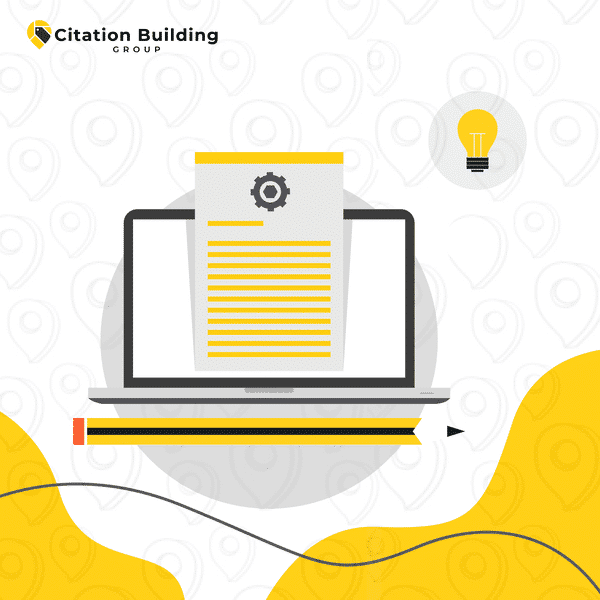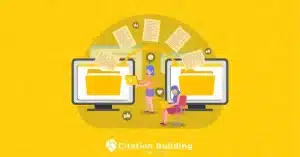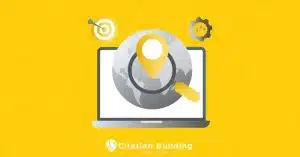If you are seeking to understand the radical transformation that the world of learning is undergoing, looking at digital tools and platforms is no longer an option, but a necessity to comprehend the future. The integration of technology is reshaping every aspect of knowledge acquisition. The Citation Building Group recognizes that building a reliable digital presence is the foundation of credibility in any field, and this comprehensive guide is designed to be your ultimate reference for understanding the role of Technology in Education and how it can build a bridge to a more personalized and engaging future for students and teachers alike.
What Is the Role of Technology in Modern Education?
The role of Technology in Education in the modern era goes beyond simply using computers in the classroom. It is a transformative force that redefines how students access information, how they interact with it, and how they collaborate with each other. Technology aims to create more flexible and personalized learning environments, prepare students for the skills required in the 21st century, and provide tools for teachers to deliver lessons and assess progress in ways that were not possible before, making it an integral part of the educational process.
How Does Technology Facilitate Personalized and Differentiated Learning?
Technology facilitates personalized learning by allowing students to progress at their own pace. Adaptive platforms can provide exercises and resources that match the level of understanding of each individual student, ensuring that no one falls behind or feels bored. Technology in Education tools also allow teachers to easily cater to different learning styles, whether a student learns best through videos, interactive simulations, or written texts, creating a more equitable and effective learning experience.
What Are the Essential Digital Tools Being Used in Today’s Classrooms?
Modern classrooms are equipped with a variety of essential digital tools:
- Learning Management Systems (LMS) like Canvas or Blackboard that act as central hubs for coursework and assignments.
- Tablets and laptops that provide each student with a gateway to access digital resources.
- Interactive whiteboards that allow teachers to deliver dynamic and engaging lessons.
- Specialized educational apps and software that focus on everything from mathematics to language learning.
- Online communication and collaboration tools that facilitate teamwork and communication outside the classroom.
How Does Technology Improve Access to Educational Resources?
Technology breaks down the physical barriers to learning by providing unprecedented access to vast amounts of information and educational resources. Students are no longer limited to the physical textbooks available in their library. Students can now access digital libraries, virtual museums, and university lectures from all over the world, enriching their educational experience and exposing them to diverse perspectives and ideas. This is one of the most important aspects of Technology in Education.
Are you ready to ensure your educational institution is as visible and reliable as the technology it uses? Let the experts at Citation Building Group build you an accurate digital footprint, so students and parents can find you with confidence.
What Is the Impact of Technology on Student Engagement and Collaboration?
The impact of Technology in Education on student engagement is overwhelmingly positive. Interactive tools and educational games can make learning more fun and motivating, increasing students’ interest and focus. Furthermore, technology enhances collaboration by enabling students to work together on projects in real-time using shared documents and communication platforms, teaching them essential teamwork skills needed for future success.
How Is AI Transforming the Educational Landscape?
Artificial intelligence is revolutionizing the educational landscape by introducing new possibilities for teaching and learning. The role of ChatGPT For Education allows teachers to automate administrative tasks like grading assignments, freeing up more time to focus on individual interaction with students. AI can also provide highly personalized learning paths for each student, identify areas where they are struggling, and offer additional support, representing the future of Technology in Education.
What Is the Changing Role of the Educator in a Tech-Enabled Classroom?

In a tech-enabled classroom, the role of the teacher is evolving from being the sole source of information to being a facilitator and guide for learning. The focus shifts from lecturing to empowering students to discover information for themselves. The teacher becomes the expert who guides students toward reliable resources, encourages critical thinking, and helps them build the skills necessary for lifelong learning. This is the fundamental shift driven by Technology in Education.
What Are the Primary Challenges and Equity Concerns of Technology in Schools?
Despite its benefits, the integration of technology poses significant challenges related to equity and access:
- The digital divide, where not all students have equal access to devices and high-speed internet at home.
- The need for adequate teacher training to ensure they can use new tools effectively.
- Concerns about student data privacy and security when using online platforms.
- The risk of increased screen time and its potential impact on students’ health and well-being.
Addressing these challenges is crucial for the success of a Technology in Education strategy.
Don’t let inaccurate information undermine your institution’s reputation. Partner with Citation Building Group to ensure your digital presence is accurate and reliable, building the trust you need to succeed.
What Is the Future of Technology in Education?
The future of Technology in Education looks promising and exciting. We are likely to see a deeper integration of artificial intelligence, virtual reality, and augmented reality to create immersive and interactive learning experiences. The focus will continue to be on personalized learning and global collaboration, preparing students for an increasingly interconnected and complex world. The ultimate goal will be to harness the power of technology to make high-quality education accessible to all, regardless of their location or circumstances.
Conclusion
The integration of Technology in Education is not just an update of the tools used, but a fundamental rethinking of the role of the teacher, the student, and the entire learning process. It represents a commitment to preparing a new generation for a world whose features have not yet been fully formed. Balancing the immense opportunities it provides with the real challenges of equity and training is the key to success. The ultimate goal is not just to create smarter classrooms, but to nurture students who are more curious, critical-thinking, and adaptable to the future.
FAQs
Can technology replace the role of a teacher?
No, technology acts as a powerful tool to enhance and support the role of the teacher, but it cannot replace the human interaction, empathy, and personal guidance that expert teachers provide.
How does technology help students with special needs?
Technology in Education provides powerful assistive tools, such as text-to-speech software, screen readers, and adaptive programs, that can help level the playing field for students with special needs.
What is the biggest barrier to adopting new technology in schools?
Often, the biggest barriers are a lack of funding for devices, inadequate professional development for teachers, and resistance to change from stakeholders who are comfortable with traditional methods.

















